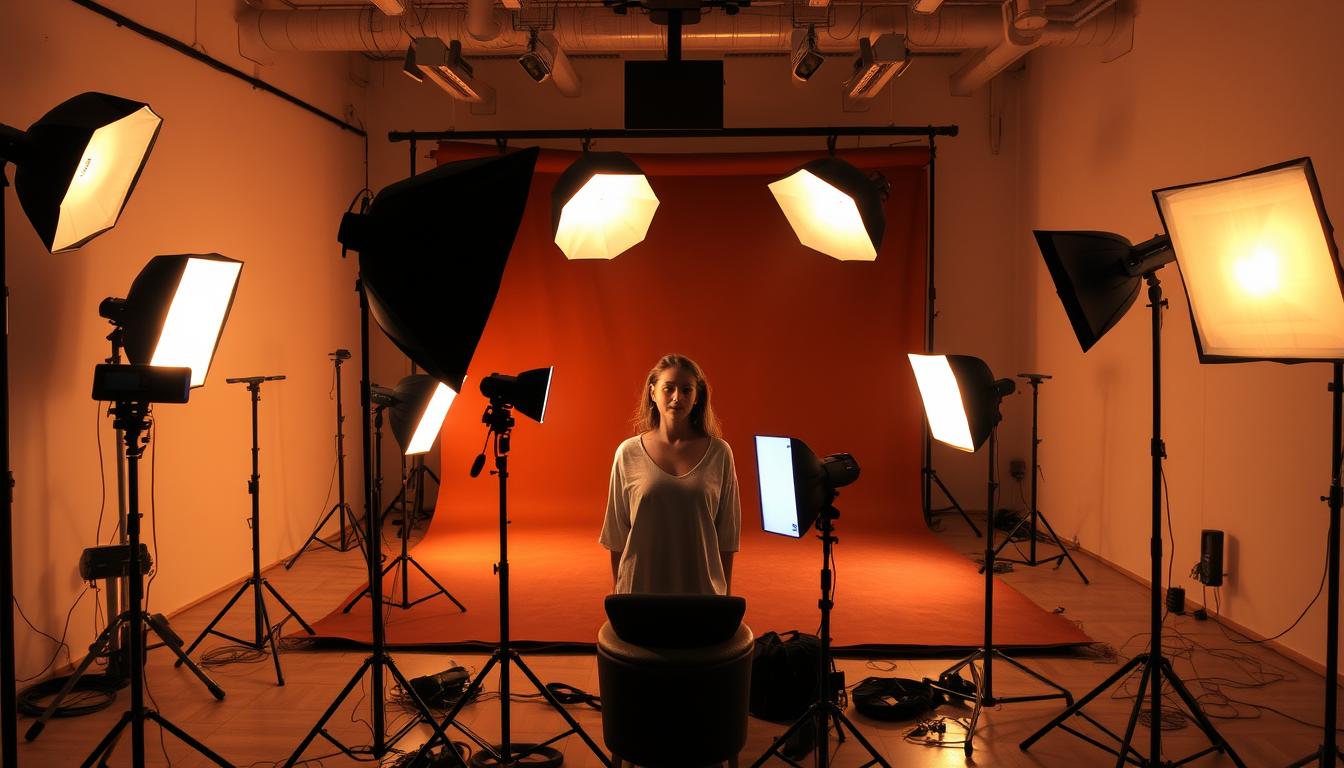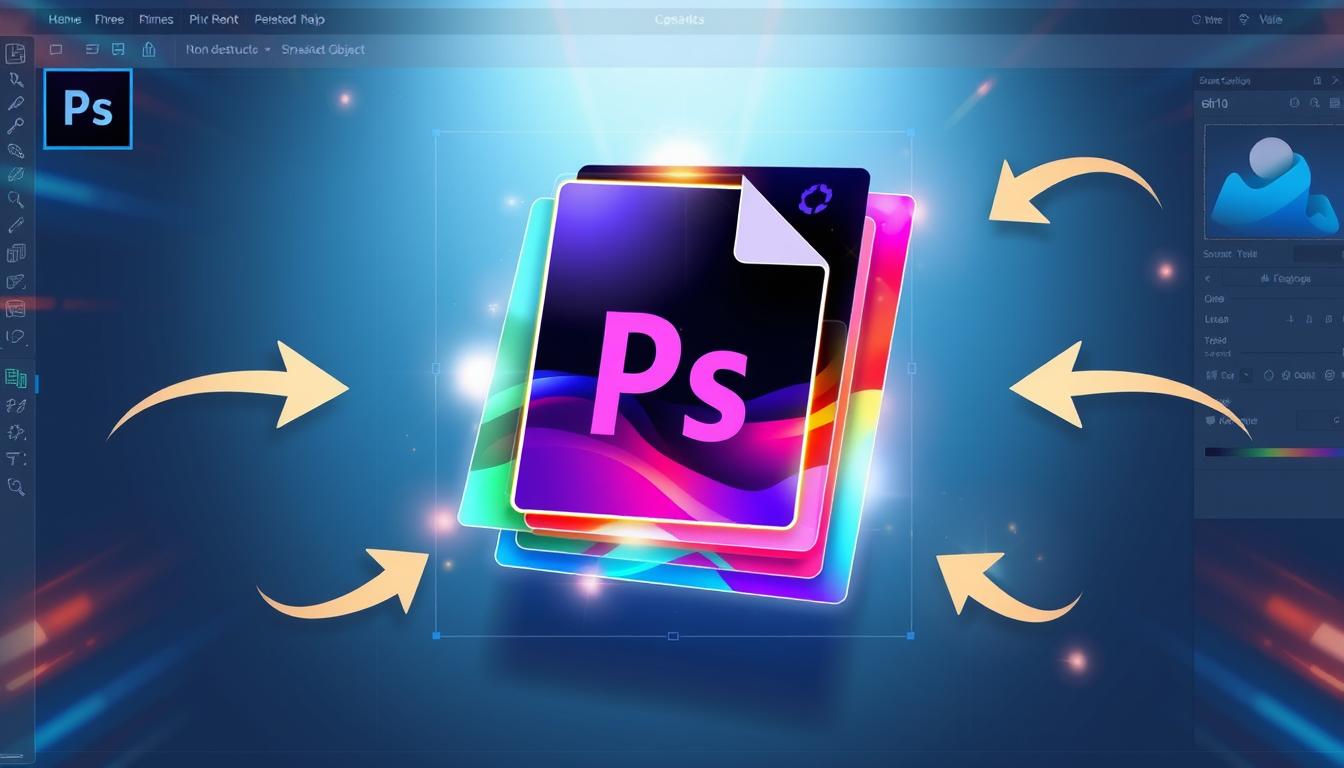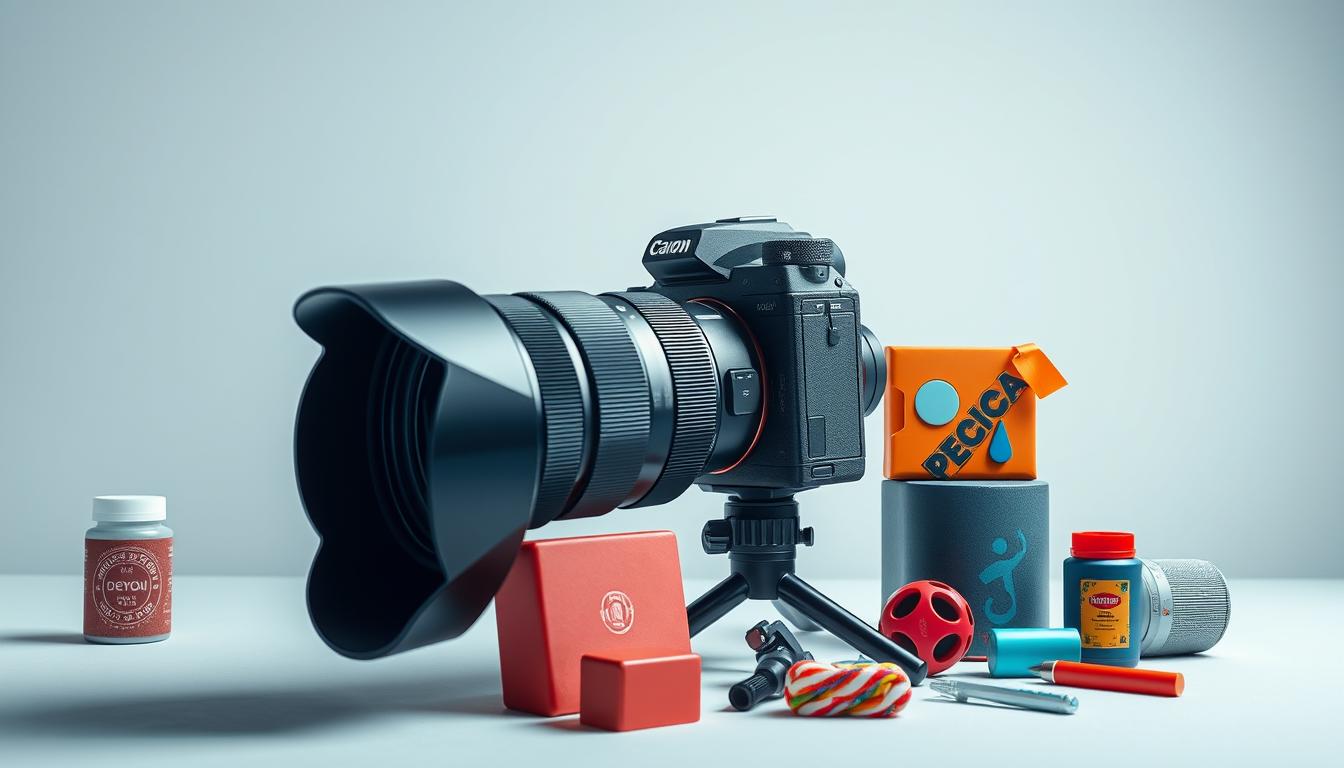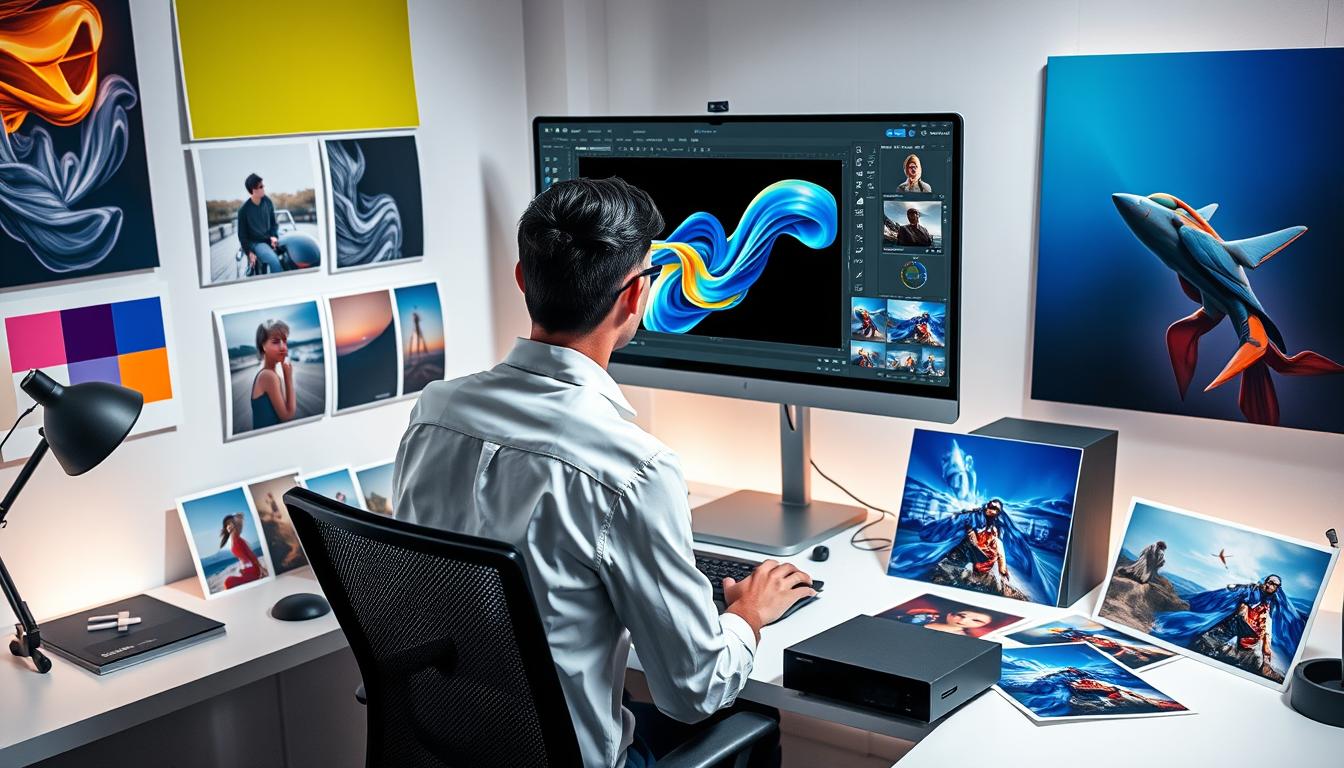Fliterated lighting is a powerful technique in photography. It creates dramatic and professional-quality images. It uses special equipment and techniques to filter and manipulate light, making unique and captivating effects.
Photographers can take their work to the next level with fliterated lighting. They can produce stunning images that grab the viewer’s attention.
In photography, lighting effects are key to setting the mood and atmosphere. Fliterated lighting is a major part of this. It lets photographers try different lighting effects and techniques to get the look they want.
Whether you’re experienced or just starting, knowing about fliterated lighting is vital. It’s essential for making high-quality images.
With the right tools and knowledge, photographers can fully use fliterated lighting. They can create breathtaking images. By mixing fliterated lighting with other techniques, photographers can make a variety of lighting effects.
Understanding Fliterated Lighting in Photography
Fliterated lighting is a photography technique that changes light to create unique effects. It uses filters and other gear to alter light and get special results.
Learning about fliterated lighting can make your photos better. It adds depth, emotion, and dimension. By trying out different equipment and methods, you can explore new creative ways to take photos.
Definition and Basic Concepts
Fliterated lighting uses filters, gels, and more to change light. It’s about understanding light and using gear to get the look you want.
Historical Development
Photographers have always looked for ways to control light. They’ve used colored gels and different light sources. Today, they keep finding new ways to use fliterated lighting to make amazing photos.
Why Photographers Use Fliterated Lighting
Fliterated lighting brings many benefits to photographers. It adds depth and creates unique effects. By using fliterated lighting, photographers can make their work stand out and share their vision with the world.
Essential Equipment for Fliterated Lighting
To start with fliterated lighting, you need the right tools. This includes filters, diffusers, and other special tools for light manipulation. You might also need specific camera settings and gear, like a tripod or remote shutter release, depending on your photography genres.
Some key equipment for fliterated lighting includes:
- Neutral density, polarizing, and color graduated filters.
- Diffusers: softboxes, umbrellas, and diffuser panels
- Lighting modifiers: reflectors, flags, and barn doors
- Camera equipment: tripod, remote shutter release, and camera lenses
Knowing how to use your gear the right way is the key to taking great photos and getting the most out of every shot. You’ll need to adjust your camera settings to get the right look. Using your gear to control light will help you create amazing images in many photography genres.

Mastering fliterated lighting equipment can elevate your photography. Don’t be afraid to explore different tools and techniques — it’s the best way to discover what truly fits your unique style and makes your work stand out.
Science Behind Light Filtration Effects
Understanding light filtration effects is key for amazing photos. Knowing about light waves, color temperature, and diffusion helps. This knowledge lets photographers play with lighting to get the perfect shot.
Light wave properties are important for how light acts through materials and filters. Color temperature also matters a lot. It changes the mood of a photo. By adjusting color temperature, photographers can make photos feel warm or cool.
Light Wave Properties
Light waves have unique properties that affect how they interact with materials. Wavelength, frequency, and amplitude are key. Knowing these helps photographers predict light’s behavior through filters, leading to interesting lighting.
Color Temperature Basics
Color temperature is vital in photography. It changes a photo’s mood. By learning about color temperature, photographers can tweak photos to look better or feel dramatic.
Mastering light filtration science opens up creative possibilities. Photographers can experiment with different lighting setups and creative techniques to capture stunning, eye-catching shots.
Setting Up Your First Fliterated Lighting System
To improve your photography skills and master fliterated lighting, start with the right setup. Choose the best equipment, place your lights correctly, and adjust your camera settings. This approach helps you achieve the best possible results and stand out in professional photography.
- Invest in a good quality light source, such as a softbox or umbrella, to achieve the desired lighting effect.
- Position your lights at a 45-degree angle to your subject to create a flattering and dynamic lighting setup.
- Adjust your camera settings, including aperture, shutter speed, and ISO, to capture the best possible image.
By following these tips and practicing your photography skills, you’ll be well on your way to creating stunning images with fliterated lighting in professional photography. Remember to play around with different lighting setups and techniques to see what brings out the best in your style and vision.

Common Fliterated Lighting Patterns and Techniques
Understanding photography lighting techniques is essential for capturing stunning photos. Filtered lighting, in particular, can add depth, mood, and emotion to your shots. Let’s dive into some popular lighting patterns and techniques that can elevate your photography.
These methods are vital for photographers to learn. These techniques can significantly enhance the quality of your photos, making them more professional and visually impactful. With the right techniques, you can achieve a variety of lighting effects, from soft to dramatic.
Butterfly Lighting
This technique involves placing the light source directly above and in front of the subject’s face, creating a subtle butterfly-shaped shadow under the nose. It’s a classic choice for portraits, adding a touch of elegance and flattering facial features.
Split Lighting
Split lighting uses a light source at a 90-degree angle to the face. It creates a split effect between light and shadow. This adds drama and depth, perfect for portraits and fashion.
Loop Lighting
Loop lighting positions the light source at about a 45-degree angle to the subject’s face, producing a small loop-shaped shadow beneath the nose. This technique offers soft, natural-looking light, making it a popular choice for both portraits and outdoor scenes.
Rembrandt Lighting
Rembrandt lighting involves placing the light source at a 45-degree angle to the subject’s face, creating a distinct triangle-shaped shadow under the eye on the shadowed side. This technique adds depth, drama, and dimension, making it a powerful choice for portraits and artistic shots.
Mastering these techniques lets photographers create stunning, professional photos. It’s all about understanding how to use lighting to enhance your images.
Mastering Camera Settings for Fliterated Photography
To capture stunning fliterated lighting effects, understanding key camera settings is vital. Aperture, shutter speed, and ISO are the core of photography. Adjusting these settings helps create sharp, well-exposed images with depth and dimension. Here are some tips to remember:
When using fliterated lighting, balancing your camera settings is key. Start with a medium to high aperture, such as f/5.6 or f/8, to achieve a balanced depth of field that keeps your subject sharp while maintaining background detail. Then, tweak your shutter speed to freeze or blur motion as you wish. Lastly, keep your ISO low to avoid noise and digital flaws.
- Use a tripod to stabilize your camera and prevent camera shake
- Experiment with different lighting patterns and techniques to achieve unique effects
- Pay attention to the color temperature of your light sources and adjust your white balance
Mastering these camera settings and following these tips will help you capture stunning fliterated lighting effects. Your photography will reach new heights.
Creative Applications in Different Photography Genres
Filtered lighting is versatile and can be used across various photography genres, from portraits and fashion to landscapes and still life, to create mood and enhance visual impact. By changing camera settings, they can get unique looks in portraits, products, fashion, and landscapes.
In portrait photography, fliterated lighting adds depth and intimacy. For example, a softbox with a fliterated filter gives a warm glow. A ring light with a fliterated filter makes for a bold look.
Portrait Photography
- Use a softbox with a fliterated lighting filter for a warm, natural glow
- Experiment with a ring light and a fliterated filter for a bold, edgy look
- Adjust camera settings, such as aperture and shutter speed, to achieve the desired effect
Product Photography
In product photography, fliterated lighting highlights textures, colors, and shapes. This makes products look more appealing. By mixing fliterated lighting filters and camera settings, photographers can create eye-catching images.
Fashion Photography
Filtered lighting adds a sense of glamour and elegance to fashion photography, enhancing textures, highlighting details, and setting the perfect mood for a standout shot. These range from soft and romantic to bold and dramatic.
Troubleshooting Common Fliterated Lighting Issues
As you get better at photography, you’ll face challenges with fliterated lighting. It’s not always easy, even with the right tools and methods. Let’s look at some common problems you might run into with fliterated lighting in professional photography.
Common issues include light falloff, color cast problems, and managing shadows. These can really affect your photo’s quality. Learning to fix these problems will help you take amazing photos that show off your skill with fliterated lighting.
Light Falloff Problems
Light falloff happens when light gets weaker as it moves away from the source. This can make your subjects look unevenly lit. To fix this, you can add more lights or move your subject closer to the light.
Color Cast Issues
Color cast problems happen when light has an unwanted color, messing with your photo’s color balance. This can be due to the light source or the environment. To fix it, you can use color correction filters or adjust your camera’s white balance.
Shadow Management
Managing shadows is key in fliterated lighting. It can change your photo’s mood and feel. To handle shadows, you can use fill lights or reflectors to soften them and balance your lighting.
By learning to solve common fliterated lighting problems, you’ll improve your photography skills. You’ll be able to take high-quality photos that show your expertise in professional photography.
Conclusion: Taking Your Fliterated Lighting Skills to the Next Level
Mastering fliterated lighting opens up new creative possibilities in photography. It lets you capture stunning portraits and product shots. This technique manipulates light and shadow for unique results.
To improve your skills, try new equipment like filters or light modifiers. Experiment with different lighting patterns and techniques. Collaborate with other photographers and share your work to get feedback.
Success comes from practice, patience, and the courage to try new things. Embrace the journey and have fun. Let your creativity shine in every shot. With dedication and a keen eye for light, you’ll create stunning photography that captivates your audience.
FAQ
What is fliterated lighting in photography?
Fliterated lighting is a photography technique. It manipulates light to create unique images. It uses special equipment to control light direction, intensity, and color.
What are the benefits of using fliterated lighting in photography?
It adds depth and emotion to photos. Depending on how it’s used, lighting can make images appear soft and dreamy or bold and dramatic. It’s great for creating different lighting effects.
What kind of equipment is needed for fliterated lighting?
You’ll need filters, diffusers, and other gear. This includes colored gels, scrims, and barn doors. These tools help control light.
How does the science behind light filtration work?
Lighting relies on light waves, color temperature, and diffusion. By tweaking these elements, photographers can craft one-of-a-kind lighting effects that bring their vision to life.
What are some common fliterated lighting patterns and techniques?
Popular ones include butterfly, split, loop, and Rembrandt lighting. Each has its own look and can be used to achieve different effects.
How do I set up my first fliterated lighting system?
Choose the right equipment first, then position your lights and tweak your camera settings. Start simple, and don’t be afraid to experiment with different techniques as you go.
How can I troubleshoot common fliterated lighting issues?
Issues like light falloff, color cast, and shadow management can occur. Knowing the causes and how to fix them can improve your skills and create better images.





